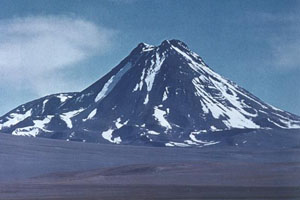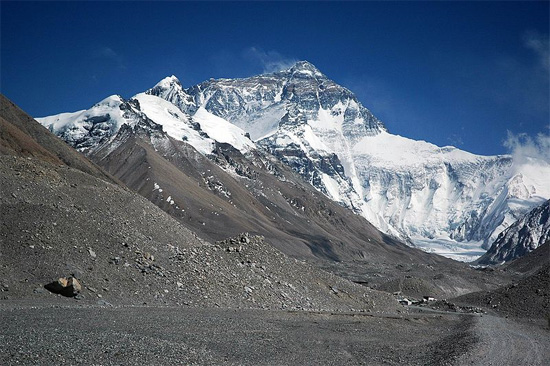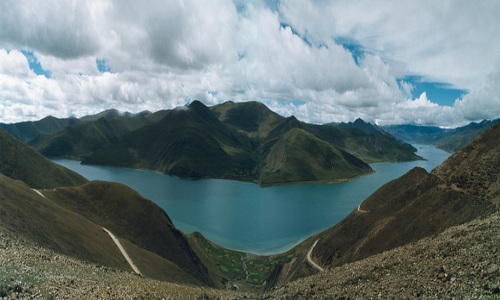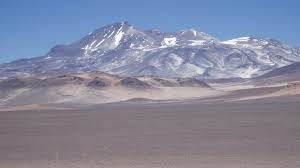5. Acamarachi Pool, Chile

One of the neighboring volcanoes to Cerro Aguas Calientes, this has its own crater pool, although it’s pretty small at just 10-15m diameter. The height is impressive though – 5,950m – as is the 45 degree angle of the volcano itself. It is thought to be extinct, with no known lava flows in recent times, but the sheerness of the sides would detract all but the most skilled climbers. It has been climbed many times, and the pool at the top photographed but not officially measured. Like Licancabur it’s a place of significance to archaeologists as it was an Inca sanctuary, and Inca artefacts have been found there. They are currently on display at the R. P. Gustavo Le Paige Archaeological Museum in San Pedro de Atacama. Not the most exciting pool for swimmers, but definitely one for historians!
4. East Rongbuk Pool, Tibet

Another Tibetan lake, this is a seasonal pool that appears whenever the snow melts. It is named after the East Rongbuk Glacier, which is one of the glaciers that contribute to it (the other being the Changtse Glacier). It was explored by Graham Hoyland, among others, who found the lake as an obstacle on one of his many adventures in the Himalayas. On that occasion he was travelling with the Territorial Army, who had a practical if unromantic way of getting past it. As Hoyland later wrote for the BBC: “There was talk of getting explosives from the villages below to blow a gap in the ice retaining wall, but apparently Semtex is regarded as profane by the holy men in the monastery in the valley below, a problem we don’t have in our country.” It’s lucky that the holy men were able to intervene, otherwise the 4th highest lake in the world – at 6,100m – might have been damaged beyond repair.
3. Changtse Pool, Tibet

The Changtse Glacier also creates another high lake – the Changtse Pool at 6,216m above sea level. Little is known about it, but it appears on topological maps and is said to be 180m by 230m. The Changtse Peak is linked to Mount Everest and was explored by George Mallory’s ill-fated expedition in 1924 from which he did not return.The source of the water in the Changtse Pool is unclear, but some think it is the product of a sub-surface aquifer which has somehow saturated the glacier to create the lake. Another mysterious Tibetan lake which can just about be spotted on Google Maps, in among the threatening snowy peaks.
2. Lhagba Pool, Tibet

And now for the highest of the Himalayan lakes, at an altitude of 6,358m above sea level. It is located on the slopes of Everest, around 6km north of the summit and 3km east. Little is known about the pool, but it is said to be 180m by 50m at its widest and longest points. If you fancied a very secluded swim, this would probably be a great place to go. Just don’t count on having copious amounts of oxygen or nice warm water…
1. Nevado Ojos del Salado, Argentina

So, for the highest body of water anywhere in the world, you’d expect something impressive wouldn’t you? Well, the altitude is impressive – 6,390m above sea level. But the lake itself is another small crater lake, with a diameter of only 100m and a depth of 10m. It doesn’t even have its own name, just taking the name of the volcano it sits upon – Ojos del Salado, or “The Eyes of Salty Water” in English. It’s the highest volcano on Earth and is not entirely dormant, having had some recent volcanic activity such as sulfuric gases and vapors leaking out.
The peak is on the border of Argentina and Chile and can be climbed from either side – generally the Chilean side has a more touristy, luxurious feel, with huts and jeeps provided but you also have to pay hefty fees, which some would see as bribes. The Argentinian side has less red tape, but the police take no responsibility for your actions on the mountain…and that means they aren’t responsible for your safety either. But it’s good to know that the highest lake in the world is accessible to people who aren’t necessarily professional climbers – just be prepared to feel a little underwhelmed at the lake itself!
Leave a Reply